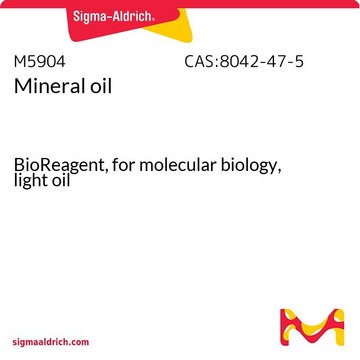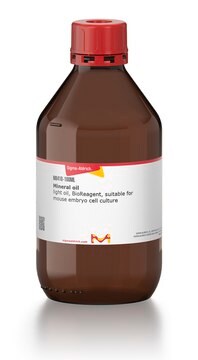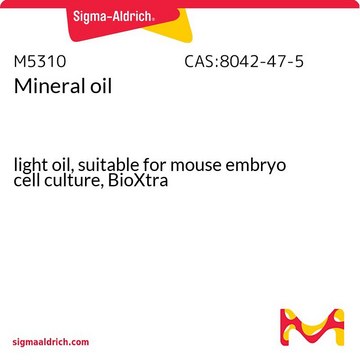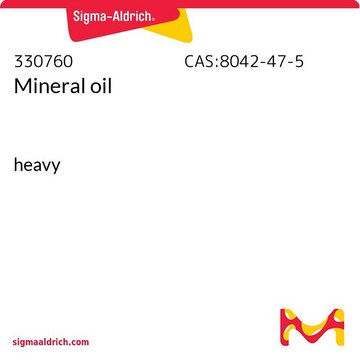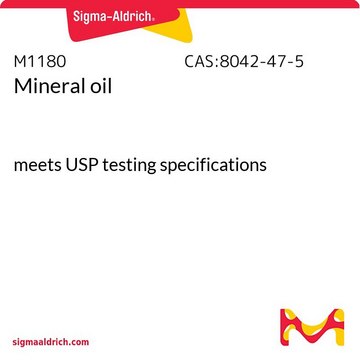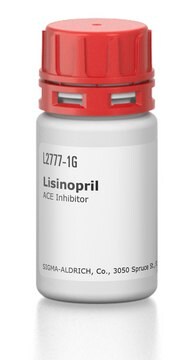M8662
Mineral oil
PCR Reagent
Synonym(s):
Mineral oil for PCR
About This Item
Recommended Products
grade
PCR Reagent
Quality Level
form
liquid
packaging
vial of 1.5 mL (Total volume 7.5 mL (5 vials))
technique(s)
PCR: suitable
color
colorless
refractive index
n20/D 1.467 (lit.)
density
0.84 g/mL at 25 °C (lit.)
foreign activity
DNase, RNase, protease, none detected
storage temp.
room temp
InChI key
AEOVEGJBKQQFOP-DDVLFWKVSA-L
Looking for similar products? Visit Product Comparison Guide
General description
Application
- for routine PCR amplifications
- to improve the heat conductivity between the device and the cycler during reverse transcription-polymerase chain reaction (RT–PCR) amplification
- to prevent evaporation during single-cell MATQ-sequencing performed on Bravo automated liquid handling platform
Features and Benefits
- Provided in a convenient 5 × 1.5 mL (1 vial) pack size
- Tested for the absence of DNase, RNase, and protease.
Storage Class Code
10 - Combustible liquids
WGK
WGK 1
Flash Point(F)
No data available
Flash Point(C)
No data available
Personal Protective Equipment
Choose from one of the most recent versions:
Already Own This Product?
Find documentation for the products that you have recently purchased in the Document Library.
Customers Also Viewed
Protocols
Method for bacterial genome analysis and detection of pathogens. Minimize false positive PCRs through lab design and reagents tested for use in bacterial PCR applications.
Protocol using antibody mediated hot start polymerase. Method has short activation period (<1min), and results in higher yields and more specificity over standard PCR methods.
Hot Start Taq Polymerase protocol to reduce non-specific amplification, with MgCl2 Optimization
Protocol using antibody mediated hot start polymerase with a red dye for easy gel loading. Method has short activation period (<1min), and results in higher yields and more specificity over standard PCR methods.
Our team of scientists has experience in all areas of research including Life Science, Material Science, Chemical Synthesis, Chromatography, Analytical and many others.
Contact Technical Service